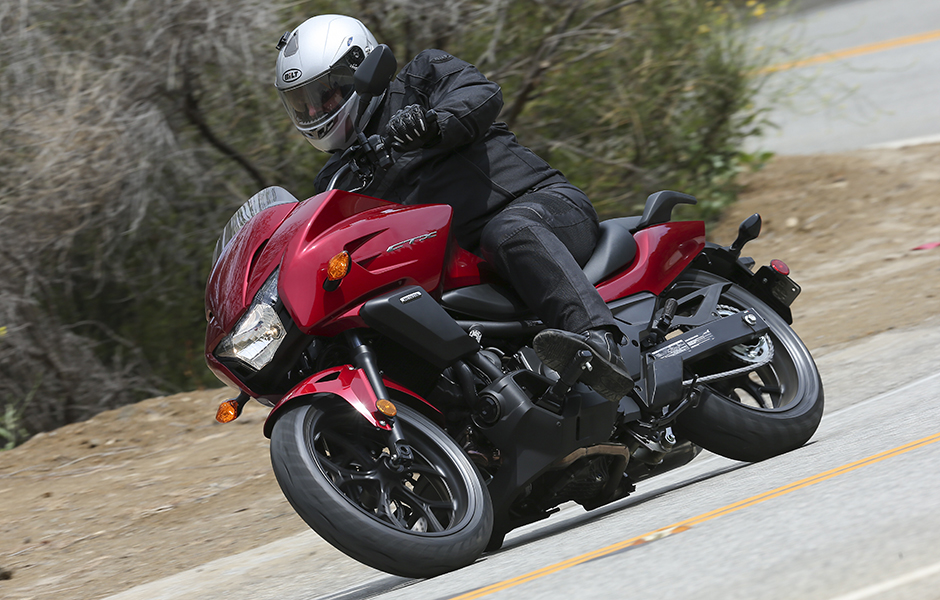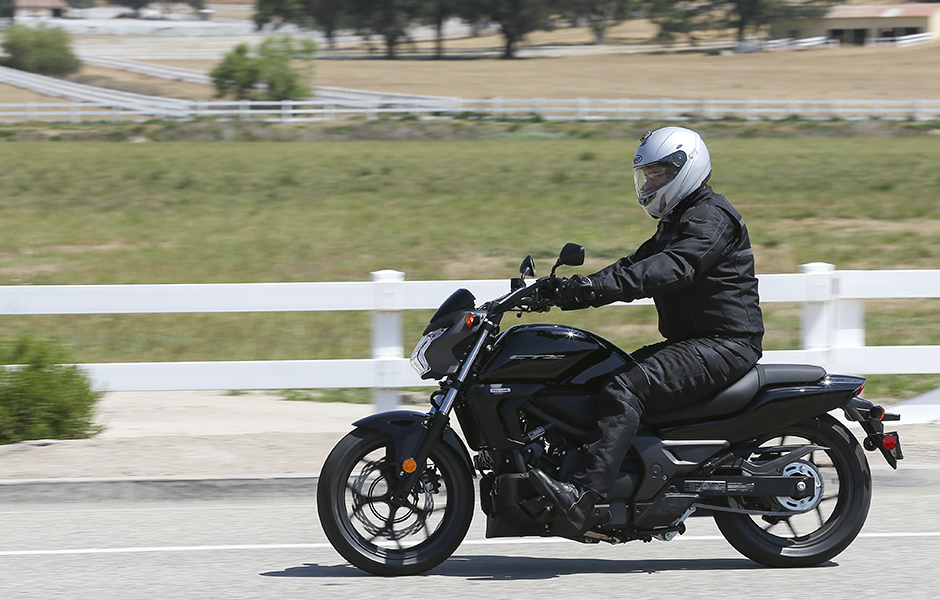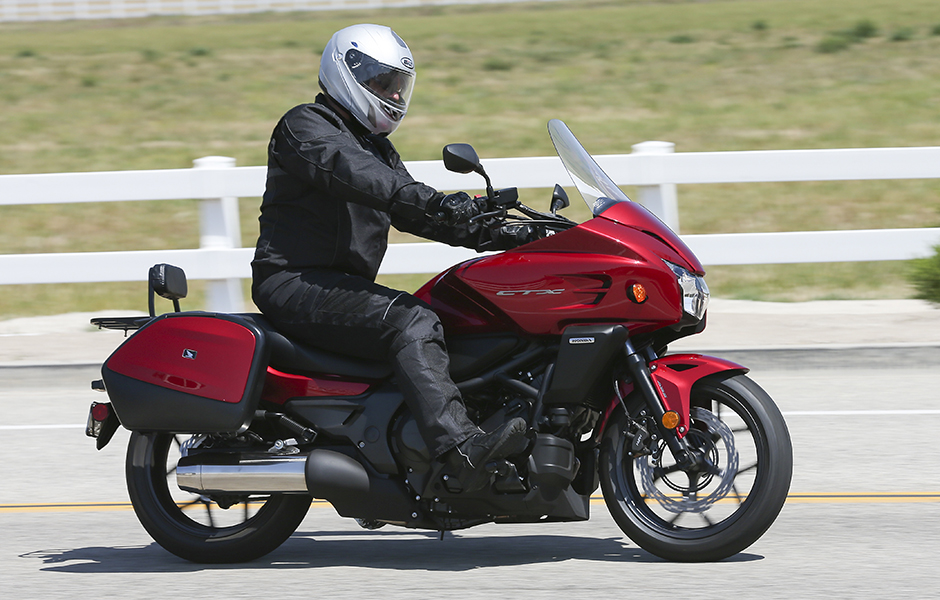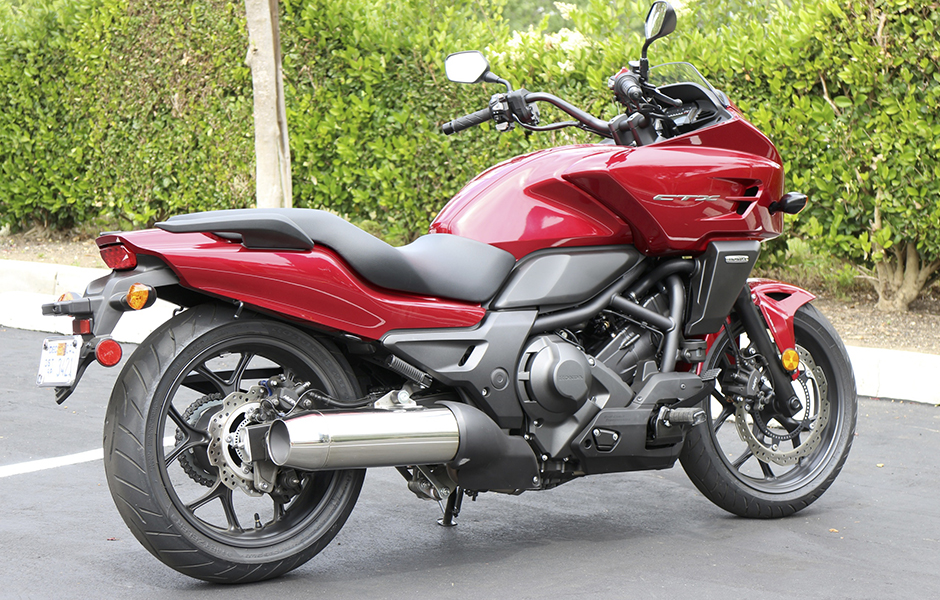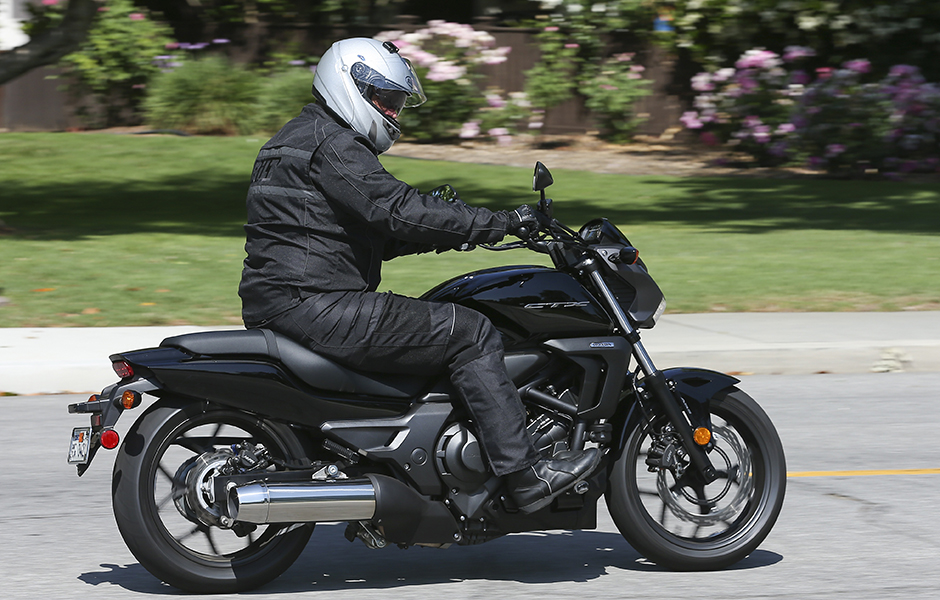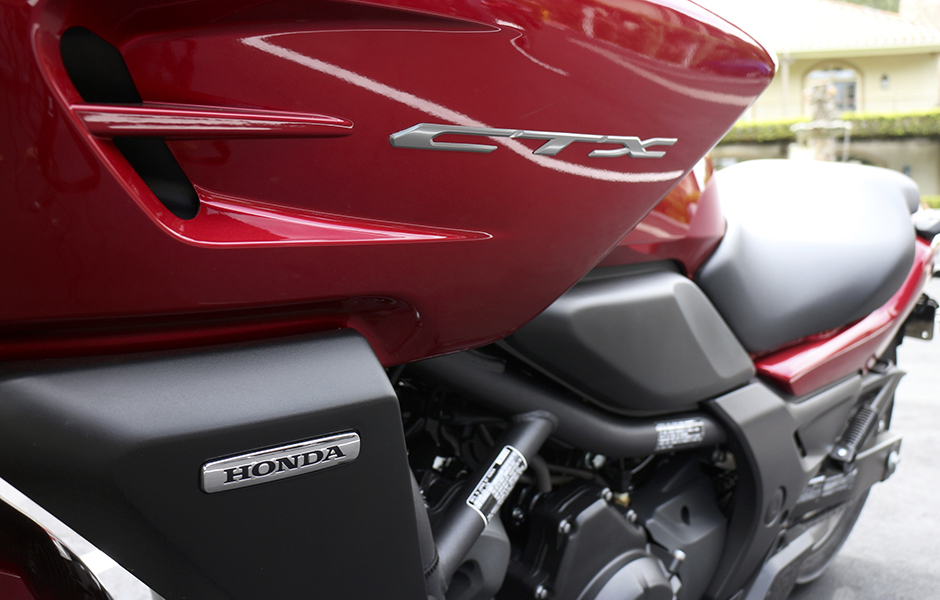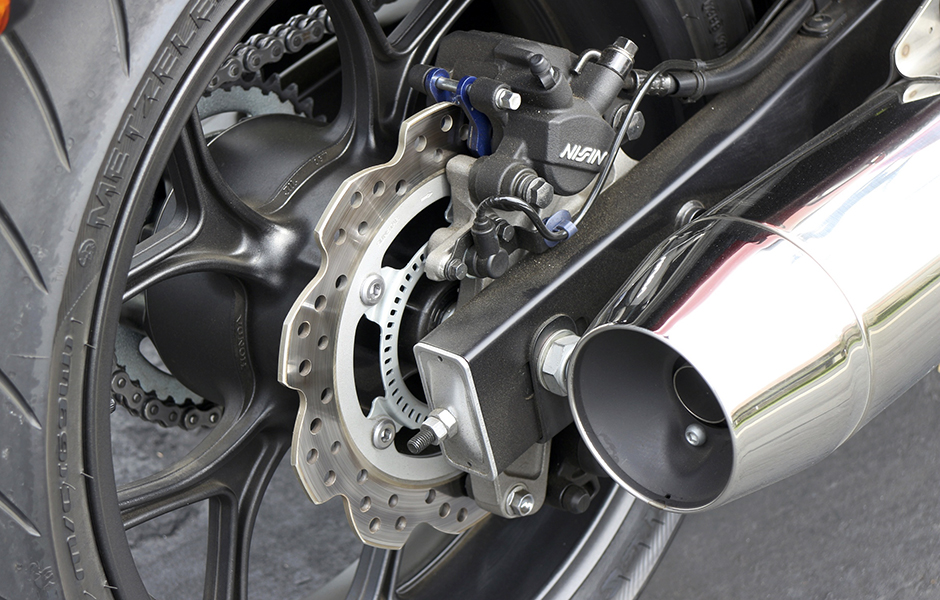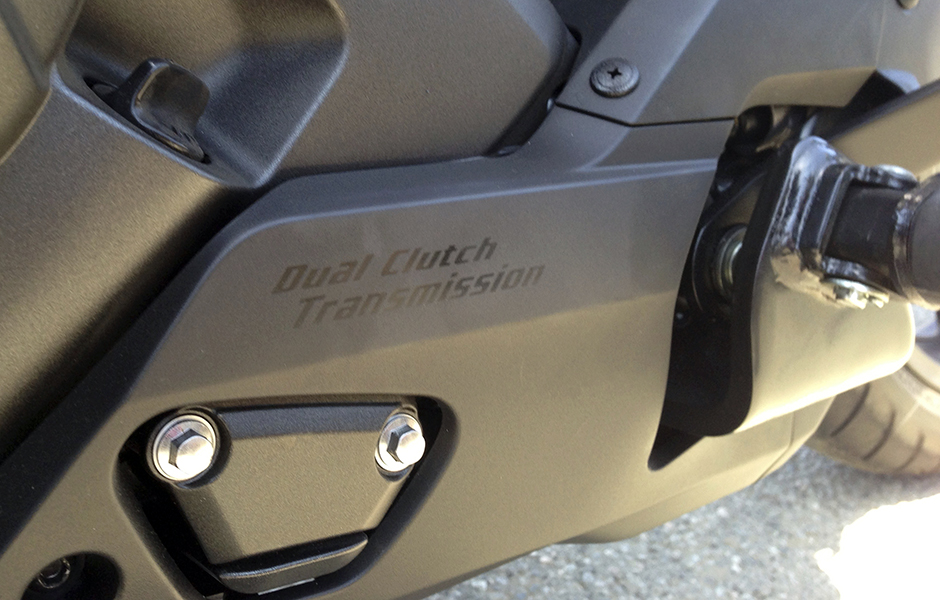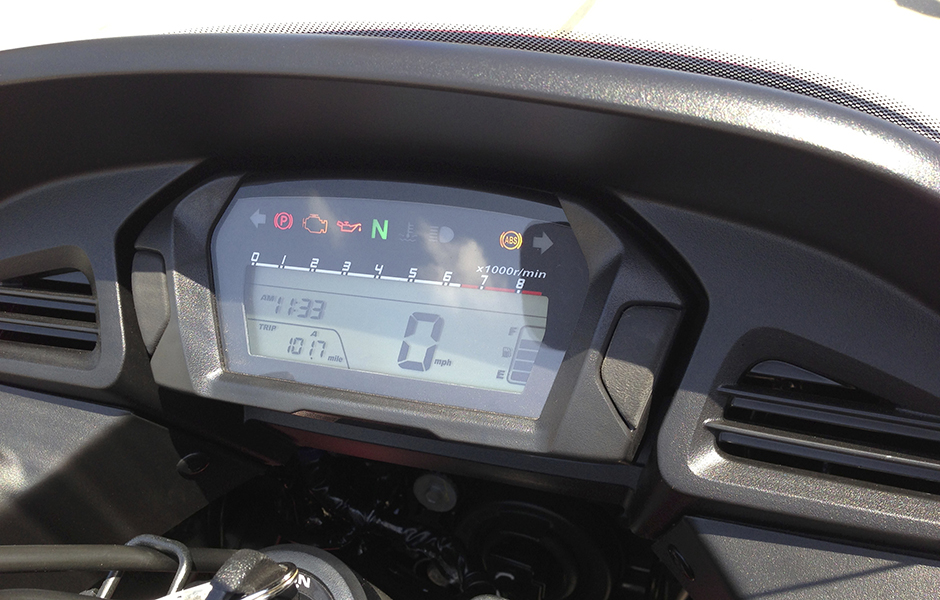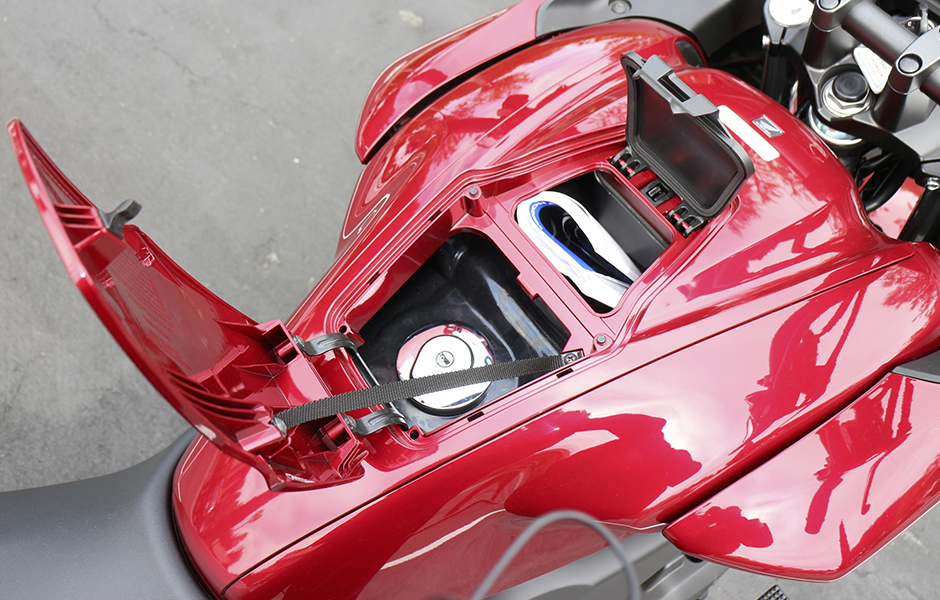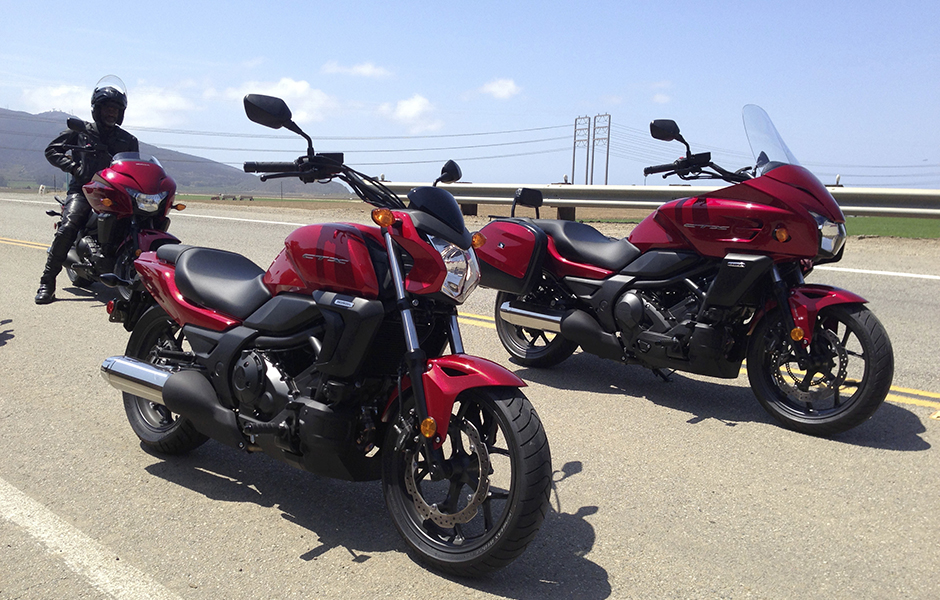- 1. Honda CTX Series
- 2. Honda CTX Series
- 3. Honda CTX Series
- 4. Honda CTX Series
- 5. Honda CTX Series
- 6. Honda CTX Series
- 7. Honda CTX Series
- 8. Honda CTX Series
- 9. Honda CTX Series
- 10. Honda CTX Series
- 11. Honda CTX Series
- 12. Honda CTX Series
Recently, a friend asked me what kind of motorcycle he should get, a request for advice I get on a pretty regular basis. But parts of his wish list for his ideal bike shows how little he knows about motorcycles. What did he want? An automatic transmission. And cruise control, among numerous other things.
Veteran riders may chuckle at such apparent ignorance of how motorcycles work, but newcomers to the sport can be forgiven for asking for things like an automatic and cruise. Why? Because these days, most every car comes with both of those features as standard, no matter the price.
And suddenly, so do some motorcycles! What did I recommend? Honda has two model bases with most all of the things my friend wants. The first bike is called the CTX700, and the second is its cousin, the NC700X. Here’s why they work so well for him and other new riders.
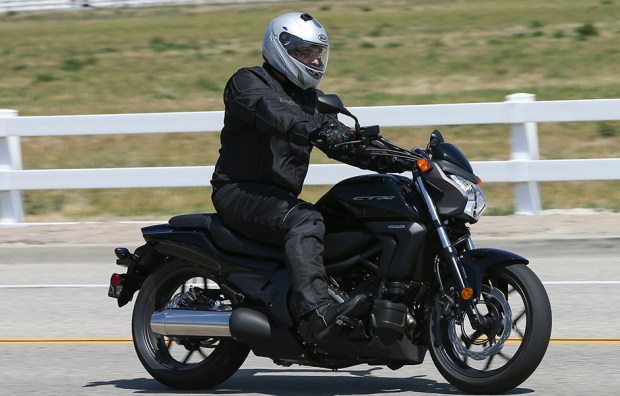
To be honest, my initial reaction was to suggest my friend get a big scooter, but no, he wanted a motorcycle, and for all the right reasons. He’s a busy, career-oriented guy, not a gearhead at all, so he wanted a bike that was easy to ride, good on gas, could do long distance and commute in the city, and required minimal upkeep. He wanted a bike he could just ride anywhere, park, and rely on – much like a modern car.
Not too long ago, features like an automatic and cruise were unheard of on a low-cost two-wheeler – or on any bike at all – but now, those features highlight a growing tech trend by motorcycles makers, who are quickly realizing that younger potential riders come from a different, more high-tech background than the traditional gearhead riding club. They’re not into spending hours tinkering with valve clearances and adjusting clutch cables in the garage; they’re into their phones, gaming and social groups, among other non-mechanical pursuits. They just want to ride, never mind the complications.
Additionally, many young people these days have no idea how to drive a car with a manual transmission. Indeed, carmakers are slowly phasing out the stick shift, which makes up less than five percent of all cars sold. That’s how good – and reliable – the modern automatic is. The experiences of today’s youth are as far removed from us older riders as ours was from our grandparents – or even our parents. Tech has changed so much so quickly, and will continue to do so.
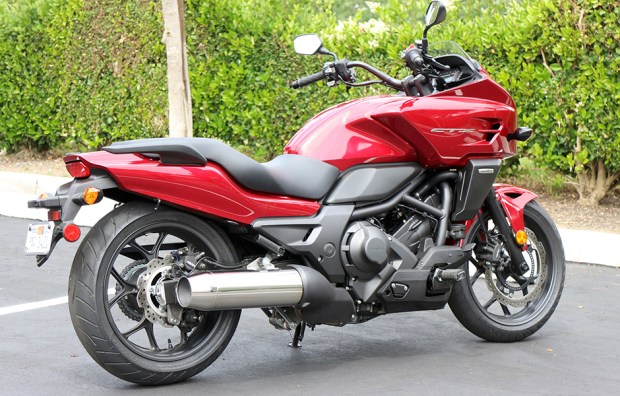
Both Honda CTX and NC series bikes are what I’d describe as “basic regular motorcycles,” a modern variant on what we used to call “universal Japanese
A vast selection of Honda options lets buyers customize it to more closely fit their vision of riding, from a street-fighteresque version to a light tourer. I got to ride one a while back and while I as a veteran would likely not buy one given so many other options, I must say the ease and comfort of the CTX models I rode was fantastic. That Honda DCT automatic is amazing. No shifting? I could get used to it for open road and city riding.
The NC700X shares a motor and transmission with the CTX to a large degree, but it’s configured more like a very modern sport standard rather than the CTX’s more low-slung stance. It can also be had with the auto option, which if chosen, also adds ABS brakes to the mix. The NC is probably better for a rider with some experience, although in truth, I would easily recommend it to a new rider as well. It’d be a matter of style, really.
Both bikes cleave to what could be called Honda’s KISS (Keep it Super Simple) philosophy. The engine is essentially based on the ultra-reliable fuel-injected plant in the Honda Fit car, and as such requires precious little maintenance or upkeep. Just change that oil as directed. The bikes don’t have round gauges like from years past. Instead, there’s an LCD panel with speed, RPM and numerous other data points that keeps the rider informed at a glance. Suspension is adept but not complicated.

CTX and NC pilots who opt for the automatic transmission aren’t limited to letting the DCT pick all the gears, either. Both bikes feature ride mode options including Standard (for maximum MPG) and Sport, which lets the engine spin up to redline on hard throttle before shifting. Fun stuff!
Finally, the “automatic” transmission has a manual mode as well, much like modern cars have paddle shifters for their automatic gearboxes. A set of thumb buttons on the handlebars allow the rider to shift as they see fit, but the system is smart enough to keep you out of trouble; it won’t let you stall the engine or over-rev it when shifting.
Additionally, the long-stroke motor gets Insight-worthy mileage; Honda claims 64mpg with the automatic. It’ll tick down the highway in comfort all day long in 6th or navigate the urban jungle without breaking a sweat – or making the rider’s hand cramp up from clutching through a traffic jam. Just twist and go.
Both bikes deliver broad capabilities with some car-like features, like ABS and storage compartments to hold phones, gloves and a snack, that more traditional bikes just don’t offer.
Neither the CTX or NC bikes are going to win drag races on the street against more traditional bikes, but Honda didn’t design these two bike lines for traditional riders. They made them for my friend, who wants the fun, efficiency and wanderlust of a full-size bike without the attitude, expense or learning curve of a regular bike. He just wants to ride.
And with both bikes under $8,000 with the automatic transmission, they are extremely affordable as well. Unfortunately, neither features a built-in cruise control – yet.
Probably next year.
Riding photos by Kevin Wing. Additional photos by Bill Roberson.
